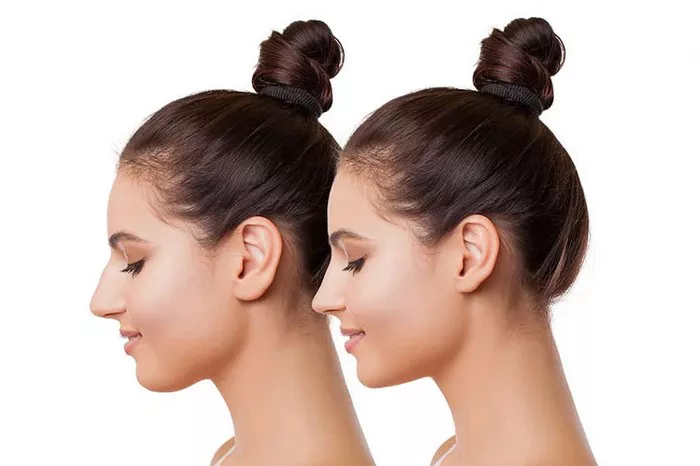The desire to alter the shape or appearance of the nose is common among individuals seeking facial harmony or aesthetic enhancement. While traditional surgical rhinoplasty is a well-known option, not everyone is willing or able to undergo surgery. Fortunately, advancements in cosmetic procedures have led to the development of non-surgical rhinoplasty, also known as a non-invasive nose job. In this article, we will explore how a non-surgical rhinoplasty works, its benefits, and what you can expect from the procedure.
What is a Non-Surgical Rhinoplasty?
A non-surgical rhinoplasty is a cosmetic procedure that reshapes or enhances the nose without the need for surgery. Unlike traditional rhinoplasty, which involves incisions and surgical manipulation of the nasal structures, non-surgical rhinoplasty uses injectable dermal fillers to modify the appearance of the nose.
The Procedure: How It Works
A non-surgical rhinoplasty typically involves the following steps:
- Consultation: The process begins with a consultation with a qualified cosmetic professional. During this consultation, you will discuss your goals, concerns, and expectations. The practitioner will assess your nose’s structure, shape, and skin quality to determine if you are a suitable candidate for a non-surgical rhinoplasty.
- Topical Anesthesia: Before the procedure, a topical numbing cream may be applied to minimize any discomfort during the injections.
- Injection of Dermal Fillers: The practitioner will carefully inject dermal fillers into specific areas of the nose to achieve the desired results. The choice of fillers will depend on various factors, including the individual’s anatomy and the desired outcome. Commonly used fillers include hyaluronic acid-based products, which provide volume and contouring effects.
- Sculpting and Molding: As the dermal fillers are injected, the practitioner will sculpt and mold the nose, precisely contouring it to address any aesthetic concerns. They will strategically place the fillers to create symmetry, balance proportions, and smooth out any irregularities.
- Assessment and Touch-Ups: Once the initial injections are complete, the practitioner will assess the results and make any necessary adjustments or touch-ups to ensure the desired outcome is achieved. This may involve additional injections or manipulation of the fillers.
- Recovery and Results: Non-surgical rhinoplasty typically requires minimal downtime. Some temporary swelling, redness, or bruising may occur at the injection sites, but these side effects usually subside within a few days. The results are immediate, and you can enjoy the enhanced appearance of your nose without the extended recovery period associated with surgical rhinoplasty.
Benefits of Non-Surgical Rhinoplasty
Non-surgical rhinoplasty offers several advantages over traditional surgical rhinoplasty, including:
- Non-Invasiveness: As the name suggests, non-surgical rhinoplasty does not involve incisions or general anesthesia, making it a less invasive option. This means reduced risk, shorter recovery time, and minimal scarring.
- Quick Procedure: Non-surgical rhinoplasty is typically a relatively quick procedure, often taking less than an hour to complete. This is in contrast to surgical rhinoplasty, which can require several hours in the operating room.
- Minimal Downtime: Since the procedure is non-invasive, the recovery time is significantly shorter compared to surgical rhinoplasty. Most individuals can resume their daily activities almost immediately after the procedure, with minimal restrictions.
- Reversible Results: One of the significant advantages of non-surgical rhinoplasty is that the results are not permanent. The dermal fillers used can be adjusted or dissolved if the desired outcome is not achieved or if you wish to make further changes in the future.
- Addressing Specific Concerns: Non-surgical rhinoplasty can effectively address certain aesthetic concerns, such as adding volume, improving symmetry, camouflaging bumps or irregularities, or lifting the nasal tip. However, it’s important to note that not all nasal concerns can be addressed with non-surgical options, and surgical rhinoplasty may be necessary for more complex issues.
Considerations and Limitations
While non-surgical rhinoplasty can provide satisfying results for many individuals, it’s essential to consider the following factors:
- Temporary Results: The results of a non-surgical rhinoplasty are temporary. The dermal fillers used typically last between 6 months to 2 years, depending on the product used and individual factors. Regular touch-ups or repeat treatments are necessary to maintain the desired appearance.
- Limitations in Complex Cases: Non-surgical rhinoplasty has its limitations, particularly for individuals with significant structural issues or who require extensive reshaping of the nose. In such cases, surgical rhinoplasty may be a more suitable option.
- Qualifications of the Practitioner: Non-surgical rhinoplasty should only be performed by qualified and experienced cosmetic professionals who have a thorough understanding of facial anatomy and the techniques involved. Always seek treatment from a reputable practitioner who can ensure safe and effective results.
Conclusion
Non-surgical rhinoplasty offers an alternative approach to traditional surgical rhinoplasty, providing individuals with the opportunity to enhance the appearance of their nose without invasive procedures or lengthy recovery periods. By using dermal fillers strategically, non-surgical rhinoplasty can address specific aesthetic concerns, such as adding volume, improving symmetry, or contouring irregularities. However, it’s important to consult with a qualified cosmetic professional to determine if you are a suitable candidate and to discuss your goals and expectations. With proper care and maintenance, non-surgical rhinoplasty can help you achieve the nose you desire.

